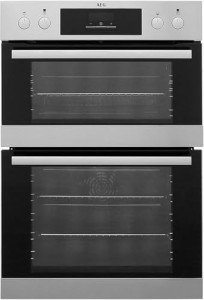12 Companies Leading The Way In Fitted Ovens And Hobs
Fitted Ovens and Hobs: An In-Depth Guide to Modern Cooking Appliances
Fitted ovens and hobs have actually become a staple in contemporary cooking areas, combining functionality, looks, and ingenious technology. These kitchen appliances are developed to flawlessly incorporate into kitchen surfaces, offering the culinary enthusiast with the tools required for efficient meal preparation while maintaining a smooth and orderly appearance. In this short article, we will check out the various types of fitted ovens and hobs, their benefits, elements to consider when picking them, and responses to regularly asked questions.
Comprehending Fitted Ovens and Hobs
Fitted ovens and hobs are appliances specifically designed to be built into kitchen cabinets or countertops for a seamless appearance. They can differ substantially in design, size, performance, and functions, which cater to varied cooking requirements and kitchen styles.
Kinds Of Fitted Ovens
- Built-in Ovens: These ovens are installed directly into a wall or kitchen unit and be available in numerous configurations and sizes.
- Double Ovens: A built-in version that consists of 2 separate oven compartments, enabling several dishes to be prepared at differing temperature levels at the same time.
- Combination Ovens: These flexible appliances combine standard baking with microwave innovation.
- Steam Ovens: Ovens that utilize steam for cooking, maintaining wetness in food while boosting tastes and nutrients.
- Single Ovens: A standard oven system that is the most typical type utilized in homes.
Kinds of Hobs
- Gas Hobs: These utilize burner for cooking, providing immediate heat and accurate temperature level control.
- Electric Hobs: Powered by electricity, these hobs typically include smooth surfaces that make them simple to tidy.
- Induction Hobs: Utilizing electro-magnetic energy, induction hobs heat cookware directly instead of the hob surface area, making them energy effective and a safe alternative.
- Blended Hobs: These use both gas and electric alternatives, providing versatility for cooking styles.
Benefits of Fitted Ovens and Hobs
Fitted ovens and hobs provide many benefits that improve the cooking experience:
- Space Efficiency: Designed to suit kitchen cabinetry, fitted appliances use up less space compared to standalone models, creating a streamlined kitchen design.
- Aesthetic appeals: Fitted models often create a more cohesive and visually appealing kitchen style.
- Personalization: Homeowners can pick from a range of designs, finishes, and features to match their kitchen decor and cooking requirements.
- Boosted Functionality: Many modern fitted ovens and hobs boast innovative technology, such as clever controls, self-cleaning functions, and accurate temperature level settings, which streamline cooking.
- Safety Features: Many hobs, particularly induction designs, have safety features such as auto shut-off and child locks, promoting a safer cooking environment.
Elements to Consider When Choosing Fitted Ovens and Hobs
When choosing fitted appliances for a kitchen, numerous aspects need to be thought about to guarantee the right choice:
- Cooking Style: Different appliances cater to various cooking practices. find more information need to examine their typical meal preparation techniques to find suitable appliances.
- Space and Layout: Measure the readily available area in the kitchen to guarantee that the picked appliances fit nicely without impeding motion.
- Energy Efficiency: Choose appliances with energy-efficient scores to decrease energy costs and environmental impact.
- Innovation and Features: Consider the wanted features, such as clever technology, self-cleaning modes, or specific cooking functions like steam or convection cooking.
- Spending plan: Determine a spending plan before making choices to guarantee that the selected designs align with monetary preparation.
Table: Comparison of Different Types of Ovens and Hobs
Home appliance Type
Pros
Cons
Built-in Ovens
Space-saving, customizable design
Installation expense can be high
Double Ovens
Prepare multiple meals at different temperatures
Uses up more area
Steam Ovens
Healthy cooking, maintains nutrients
Usually higher cost
Gas Hobs
Quick heat control, chosen by chefs
Needs a gas line installation
Induction Hobs
Quick cooking, energy-efficient, safe
Requires compatible pots and pans
Electric Hobs
Easy to clean, stable cooking temperatures
Heating times can be slower
Regularly Asked Questions (FAQs)
1. What is the difference in between a built-in oven and a freestanding oven?
A built-in oven is integrated into kitchen cabinets for a smooth appearance, while a freestanding oven stands alone and is frequently more noticeable and available.
2. Are induction hobs safe to use?
Yes, induction hobs are thought about safe as they only produce heat when suitable cookware is placed on them, decreasing the risk of burns.
3. Can I install a fitted oven myself?
While some people might pick to install fitted ovens themselves, it is generally recommended to employ a professional to ensure correct setup and adherence to security standards.
4. What size of oven is ideal for a small kitchen?
In little cooking areas, consider compact or single built-in ovens that fit within the offered area without compromising on cooking functionality.
5. Do fitted ovens and hobs need special upkeep?
Fitted appliances require standard upkeep, such as cleaning and periodic checks. However, specific maintenance tasks depend on the type of oven or hob.
In conclusion, fitted ovens and hobs represent the epitome of modern-day kitchen design and functionality. By understanding their types, benefits, and factors to consider, consumers can make informed choices that boost their cooking experiences while fitting effortlessly into their home. Whether producing premium meals or preparing family suppers, fitted ovens and hobs are valuable tools in any culinary space.
